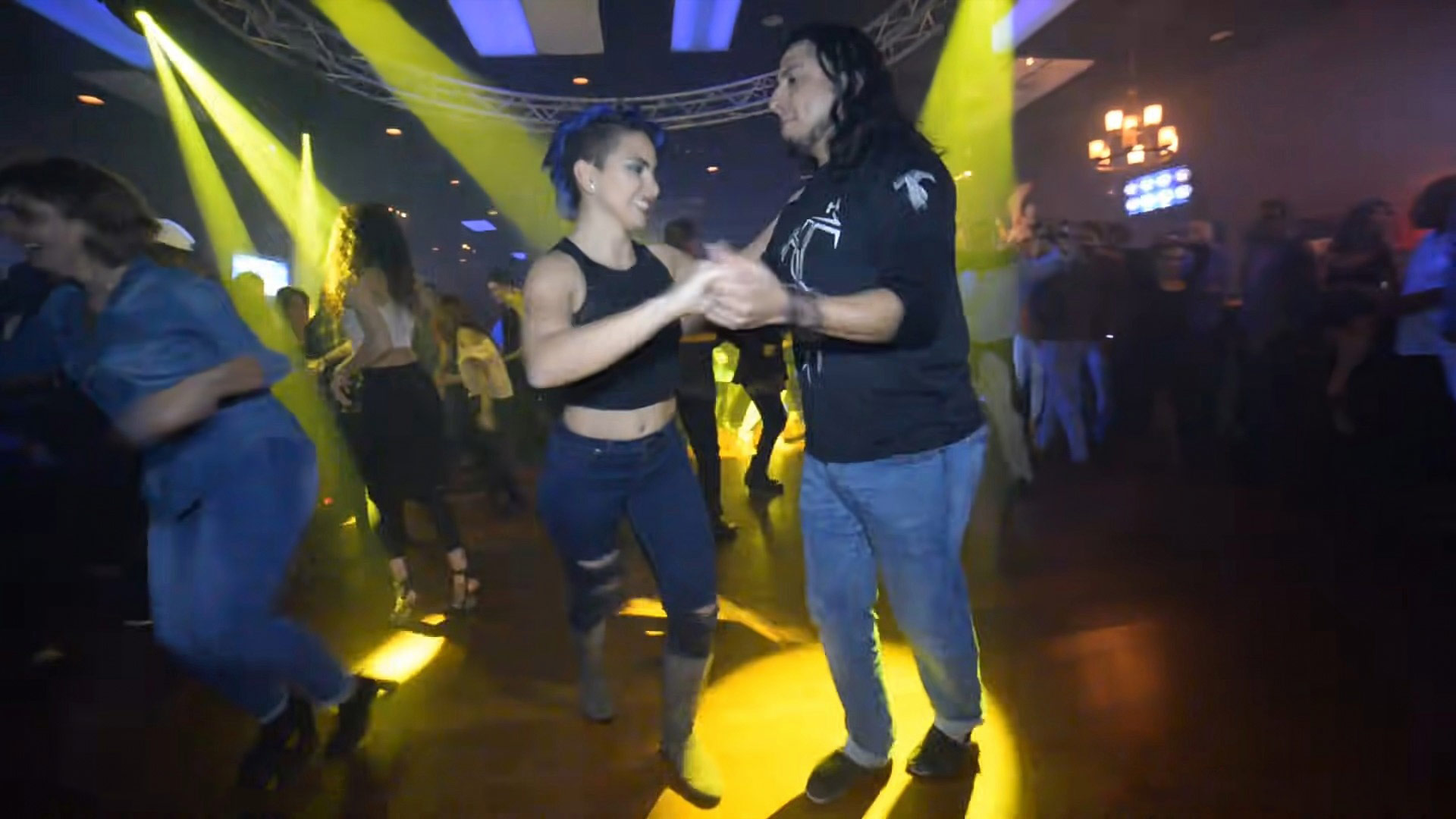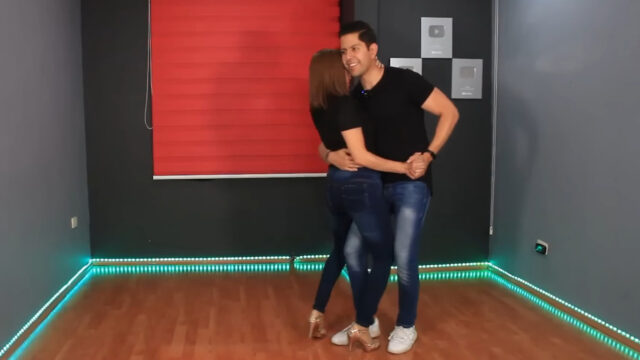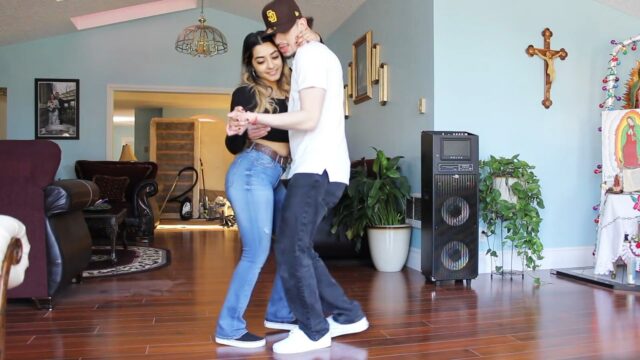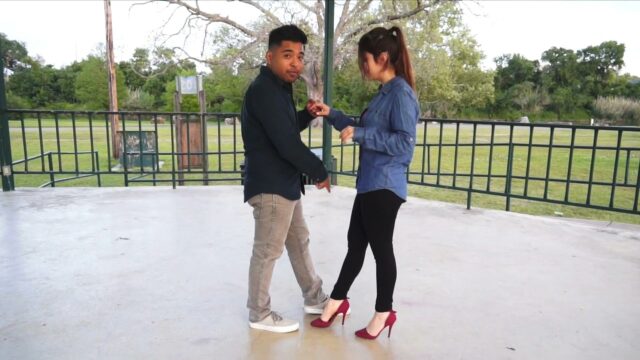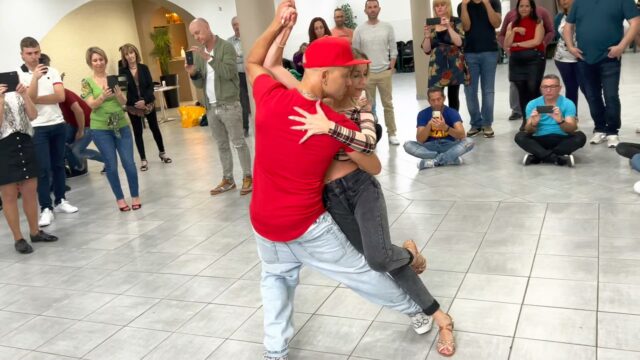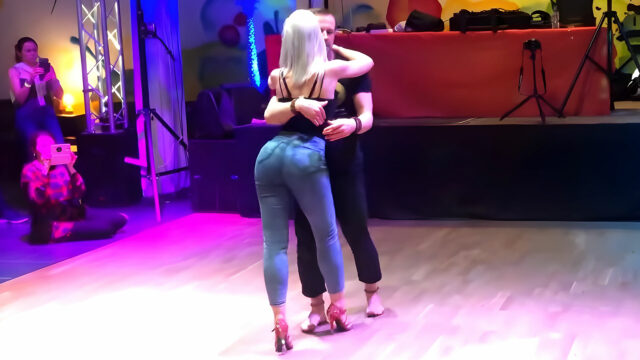Cumbia is a lively folk dance and musical genre that originated on Colombia’s coast. It has a rich history spanning over 200 years, blending African, Indigenous, and Spanish cultural influences. Nowadays, you can hear cumbia in dance clubs, house parties, family gatherings, and festivals across Latin America as well as people dancing to this music like in our today’s video of Cindy Benitez and Cisco:
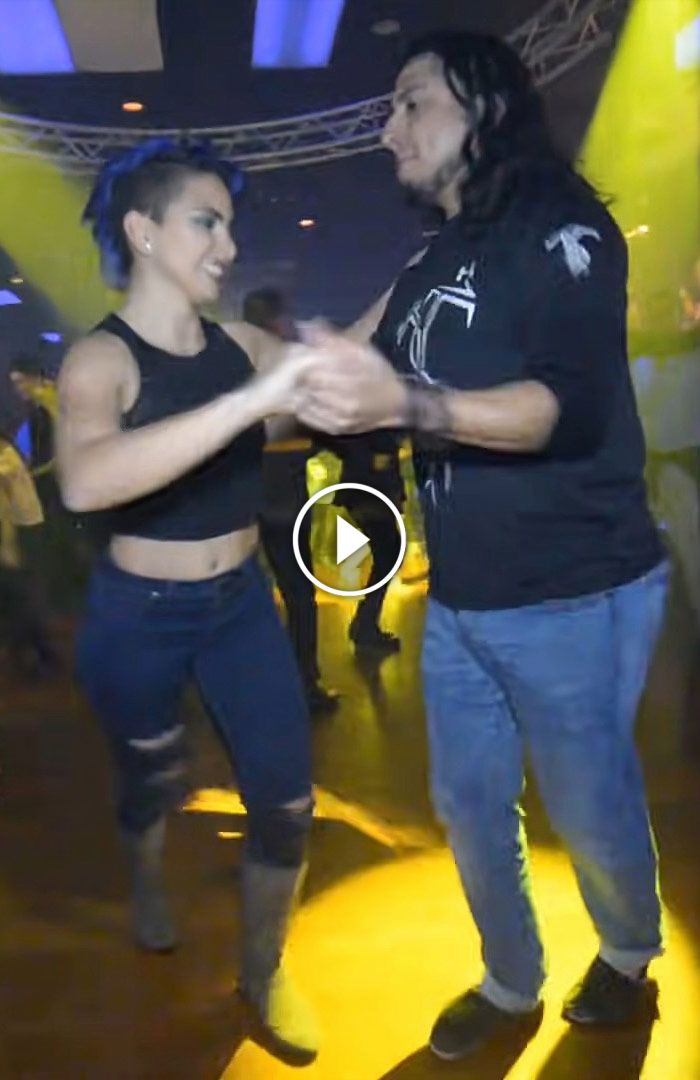
Cumbia music traces its roots back to the 16th century when African slaves were brought to Colombia by Spanish colonizers. These slaves mixed their traditional African rhythms and dances with those of the indigenous peoples and Spanish settlers, birthing the cumbia we know today. To learn Cumbia basic steps follow the link.
- How to Dance Norteñas? Basic Step & Partnerwork
- How to Dance Huapangos: Learn the Basics with Korayma and Antonio
- How to Dance Cumbia? Basic Steps Video Tutorial
Initially, cumbia was an African courtship dance involving fluid, circular movements often performed in pairs to the beat of drums, maracas, and flutes. It had a lighthearted and flirtatious mood. Over centuries, cumbia absorbed elements from other cultures and evolved into a staple at social events and festivals.
Beyond its lively rhythms and carefree ambiance, cumbia holds deeper cultural meaning. It represents the blending of African, Indigenous, and Spanish identities that created modern-day Colombia. The dance and costumes connect people to their shared history.
Cumbia also strengthened bonds among marginalized communities. Enslaved Africans and natives built solidarity through music and dance traditions. Later, working-class groups kept cumbia alive through backyard parties and outdoor gatherings.
Global Spread
From its birthplace on Colombia’s coast, cumbia spread inland then outward across Latin America through records and touring bands. Its popularity boomed in Mexico starting in the 1940s. By the 1950s, cumbia permeated the clubs and radio waves of Peru, Bolivia, Chile, El Salvador and beyond, taking on new flavors in each country.
- Mexican cumbia has a more upbeat, festive mood with faster rhythms and brass instruments.
- Peruvian cumbia blends in psychedelic rock and Andean folk melodies for a trippy feel.
- Argentine cumbia features accordions and guitars for a smooth, mellow vibe.
This diversity shows how cumbia absorbs and transforms based on each culture it touches, yet always retains its essence and signature rhythm.
Cumbia Today
Nowadays, you can hear cumbia in dance clubs, house parties, family gatherings, and festivals across Latin America, performed live or spun by DJs. Modern interpretations incorporate electronic instruments, hip hop beats, and other contemporary styles while paying homage to the genre’s folkloric roots.
In recent decades, cumbia has also spread beyond Latin America, gaining popularity in Europe and the United States. Spanish-speaking communities in the U.S. embrace cumbia as part of their cultural identity and use it to connect with their heritage.
No matter how much cumbia changes or where it goes, the dance and its rhythms hold generations and nations together through a shared history and love of music that makes bodies sway. That timeless quality ensures cumbia will keep people dancing for centuries to come!
If you enjoyed this article, feel free share it with your friends and let them know what you think about it. Also, consider checking out our most recent posts and stay in touch. Thank you!
